Hair transplant surgery is a pretty extensive operation, as it can take about a full day to perform, and sometimes even more during “megasessions” done over several days. FUT or follicular unit transplantation hair transplants involve a fairly long excision of skin where hair grafts are extracted, which requires a different type of donor area healing than the FUE or follicular unit extraction where numerous small extractions are made. I’ll discuss what healing is like after a hair transplant, and what can be done for better healing, and hair transplant results.
I’ve performed surgical hair transplants since I first started my medical practice. Prior to 2011, I applied a wound healing material I was using to help heal surgical incisions like facelifts, to help hair transplant healing. I applied this advanced wound healing material called extracellular matrix by ACell, to increase hair graft survival, and also for healing of the donor area strip excision.
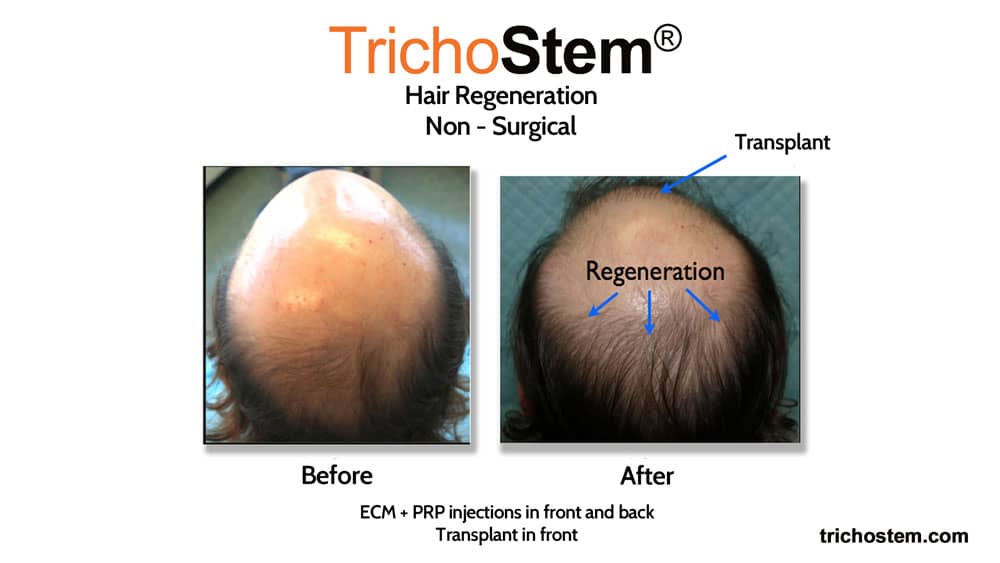
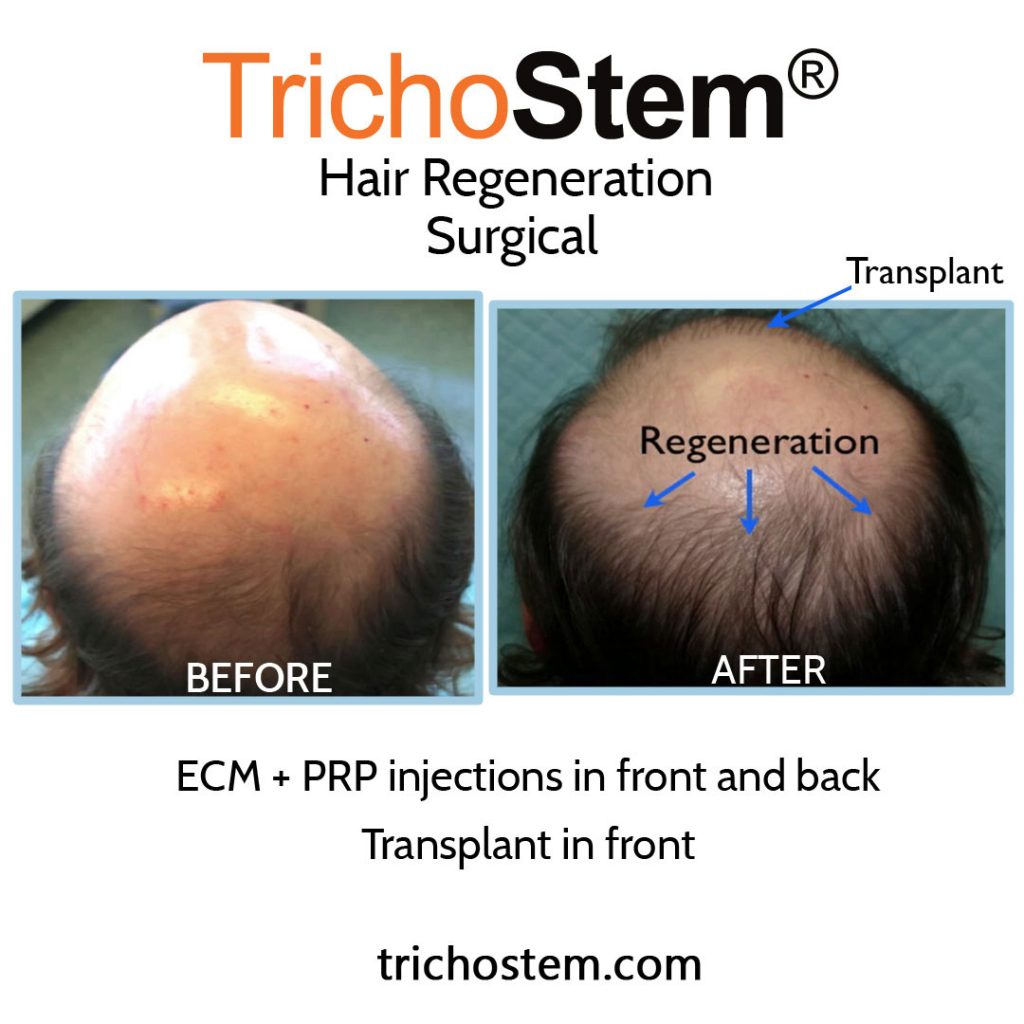
How to Improve Hair Transplant Results
What was discovered a year later is that native hair that was not transplanted grew thicker. With further development of this discovery, it became a standalone, non-surgical treatment for male and female pattern hair loss to thicken thinning hair, and stimulate growth from dormant hair follicles, without the need for surgery. The treatment that we call TrichoStem Hair Regeneration could be done before or after a hair transplant to improve overall transplant results, or to avoid or delay the need for a surgical hair transplant.
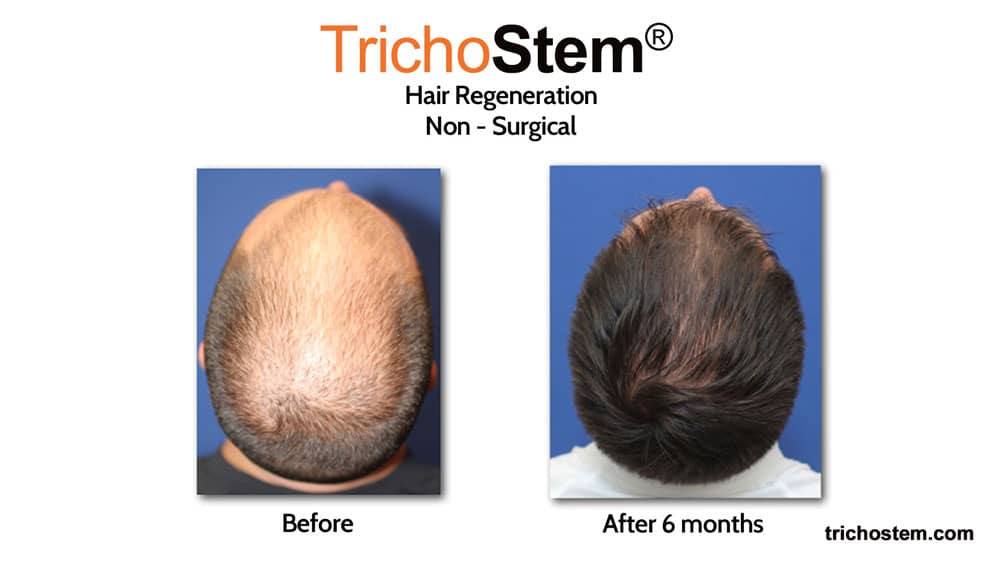
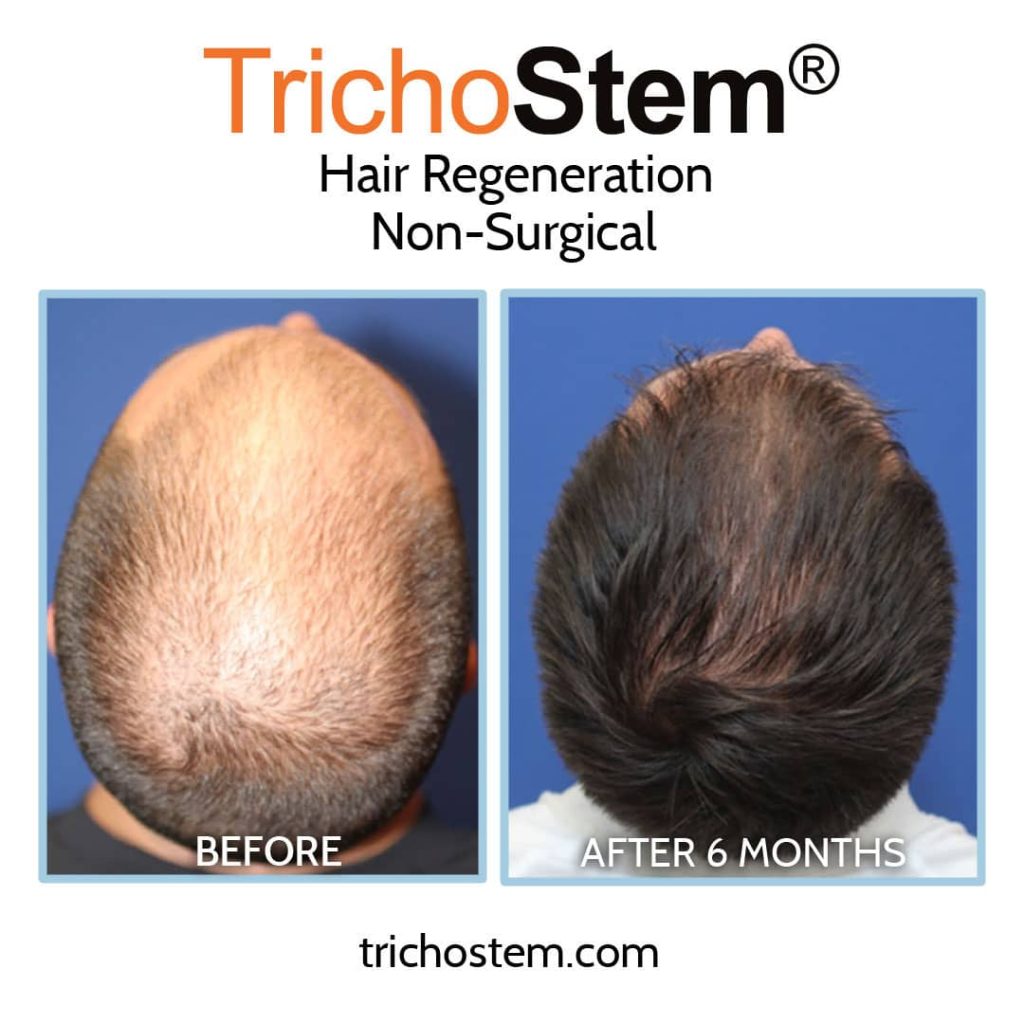
Whether it’s an FUT or FUE, surgical hair transplants involve excisions at the back of the head to harvest grafts, and the incisions in the scalp where the grafts are placed. Generally speaking, more grafts, and higher quality grafts can be obtained from the FUT procedure, where grafts are harvested from a strip of skin excised from the permanent zone.
The permanent zone is where hairs are genetically resistant to the effects of pattern hair loss, so these hairs aren’t at risk of progressive hair thinning. The FUT is less popular these days because of the potential strip scar, but it is my preferred approach for transplant surgery. What I do to address the strip excision is apply an extracellular matrix for advanced and expedited healing.
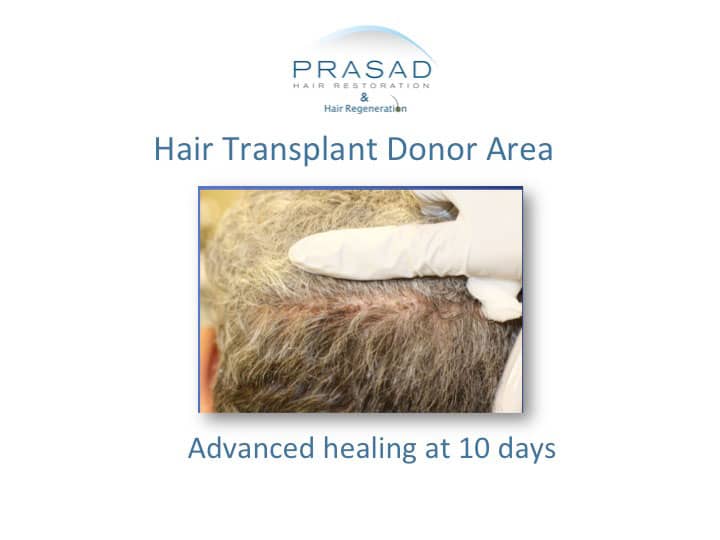
The Truth About Scarring in FUE Hair Transplant
The FUE has become a more popular hair transplant technique to avoid the large strip scar, but scarring is not completely avoided from the donor area. FUE transplants harvest grafts from a wider area at the back of the scalp. The FUE doesn’t avoid scars, but rather results in smaller scars, spread out over a wider area so they aren’t so visible.
The same surgical closure cannot be made for these scars, so depending on how the extraction process is done over a wider area, time for longer hair growth will be needed to cover the numerous but smaller extraction scars.
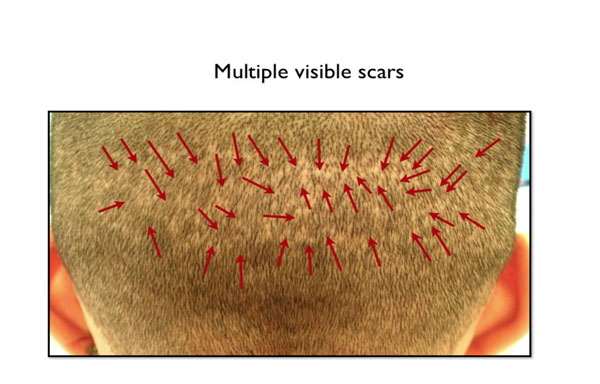
Hair Transplant Recovery
Whether an FUE or FUT is performed, healing in the recipient area of the scalp is about the same. The transplant process uses a sharp implanter to place hair grafts to the frontal and mid scalp, as well as the crown. Each graft placed is a small incision in the scalp, with a safe number of grafts ranging from 1500 to 3000 per surgery.
Saline is applied to the scalp after surgery to help moisturize the scalp to prevent excessive scabbing, and to help with healing. The most common concern with hair graft healing is losing grafts soon after surgery. 48-72 hours after surgery, implanted grafts are so firmly in place in the scalp that it would take a surgical instrument to dislodge them. People are often very worried about hair shedding after a transplant, especially when a white bulb is seen at the end of the hair shaft.
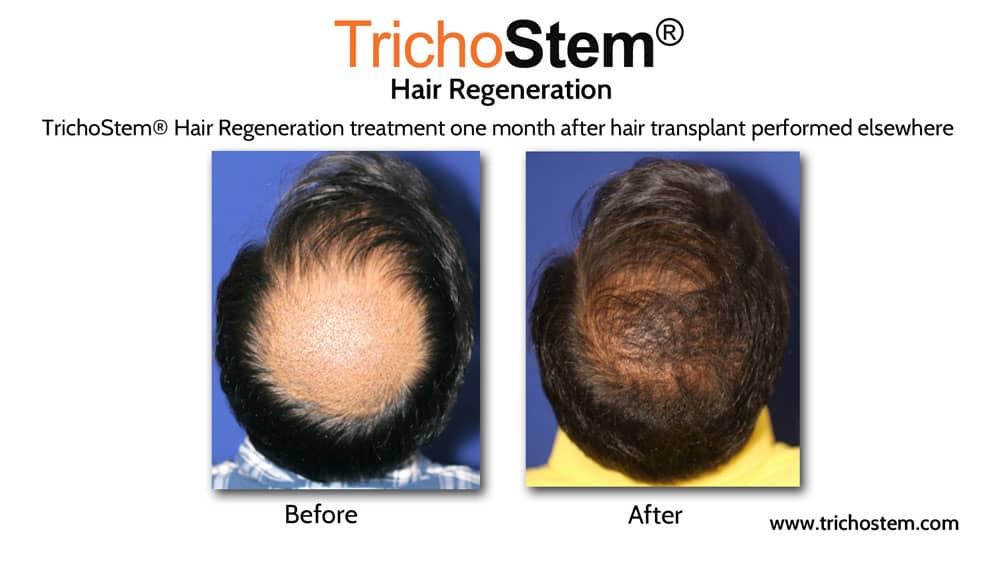
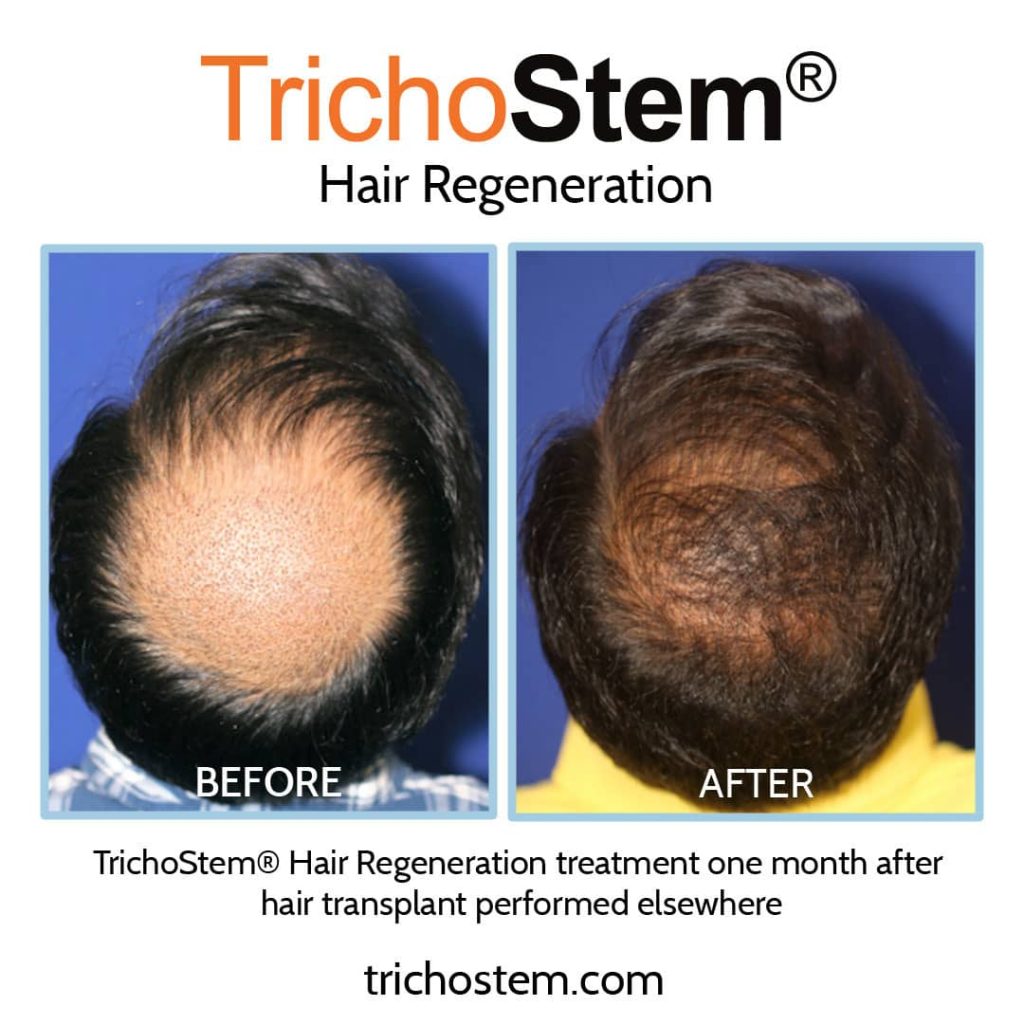
How to Deal with White Bulbs and Scabs After a Hair Transplant
The white bulb which is common with hair shedding, even without a transplant, is usually dead skin, or keratin, while the hair follicle remains in place to regrow hair. After a transplant, there could be bigger pieces of dry or dead skin from the scabs, and are usually not the follicle. Follicles that may have come out after this 48-72 hour window after a transplant didn’t take to the scalp, and would not have grown hair in the future anyway.
Scabs are the next big concern for healing after transplant surgery. There are two types of scabs: clotted blood from trauma of surgery, and dead skin. Scabs from blood usually last about a week, and hair shouldn’t be washed during this period. After about a week, hair can be gently washed with baby shampoo, which is important as scabs are usually made up of dead skin by this time.
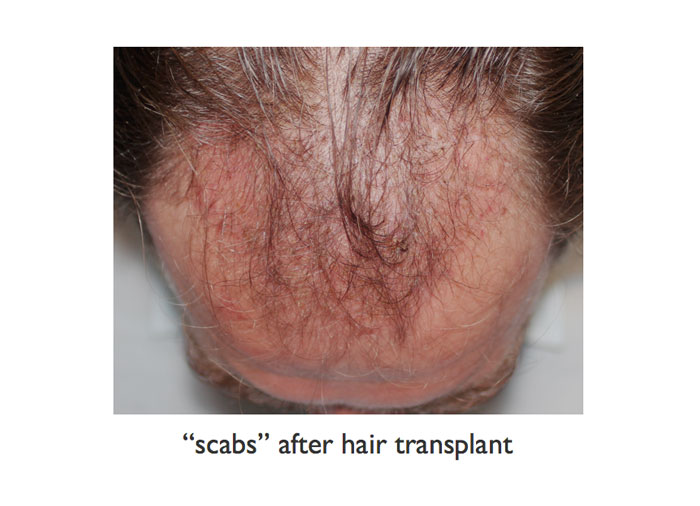
How FUE and FUT Transplants Affect the Survival of Your Hair Grafts
In FUE and FUT transplants don’t have differences in grafts healing, but there are differences in graft survival from their contrasting extraction process. The FUT only takes hair grafts from the permanent zone, which are genetically resistant to DHT and hair thinning. Since FUEs harvest grafts from a wider area at the back of the head, they can take hair grafts that are still prone to the effects of DHT, so some hair grafts can progressively thin.
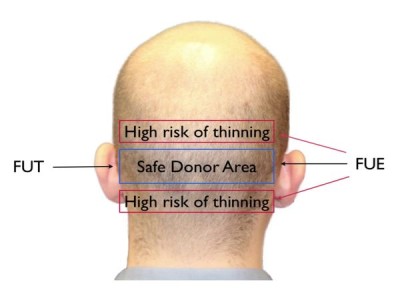
The FUT involves the excision of a strip of hair-bearing skin, so individual grafts can be harvested by a technician without the patient being present, and without risk of further injury to the patient when surrounding skin and tissue is sliced through to extract the hair follicles. FUEs harvest hair grafts individually from the patient by using a sharp punch, or other similar techniques, including automated graft harvesting using a robot.
Graft harvesting techniques use small devices to minimize scarring on the scalp, but using small tools can also cut into the hair follicle, damaging it permanently, and unable to grow hair. Damage to hair grafts during harvesting is called transection, and can be as high as 30% in FUE procedures. Transected grafts are often still implanted, often to inflate graft count, but since the follicle is missing or damaged, the graft won’t grow hair.
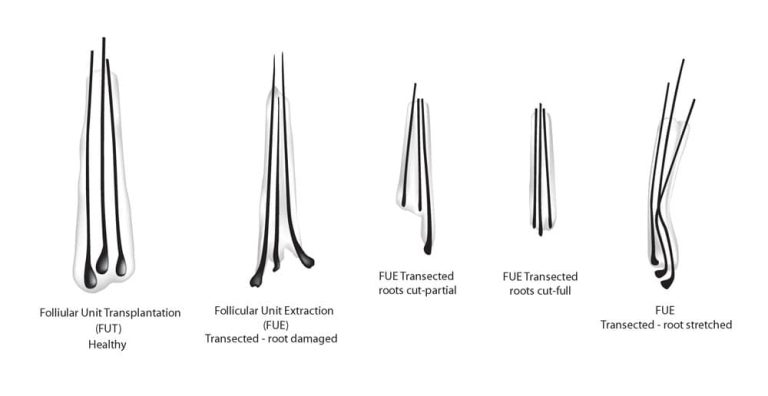
Hair shedding and hair growth are important factors after a hair transplant to be aware of. Shedding after a hair transplant is normal, and shed hair does grow back as long as the grafted and native hair follicles remain intact. It is normal for native and transplanted hair to shed soon after a transplant, but it doesn’t happen all the time.
Temporary hair shedding is usually due to shock loss, where the trauma of the hair transplant causes hair to shed, but the hair grows back with time. However, something many transplant surgeons don’t make clear is collateral hair loss, which is permanent. Collateral loss occurs when the sharp implanter damages or cuts through a native hair follicle, so the damaged follicle can no longer grow hair.
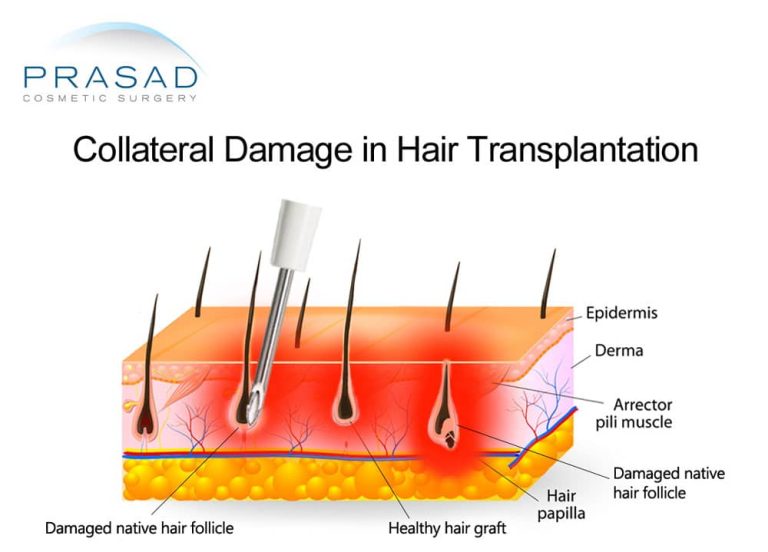
How TrichoStem Hair Regeneration Improve Hair Transplant Results
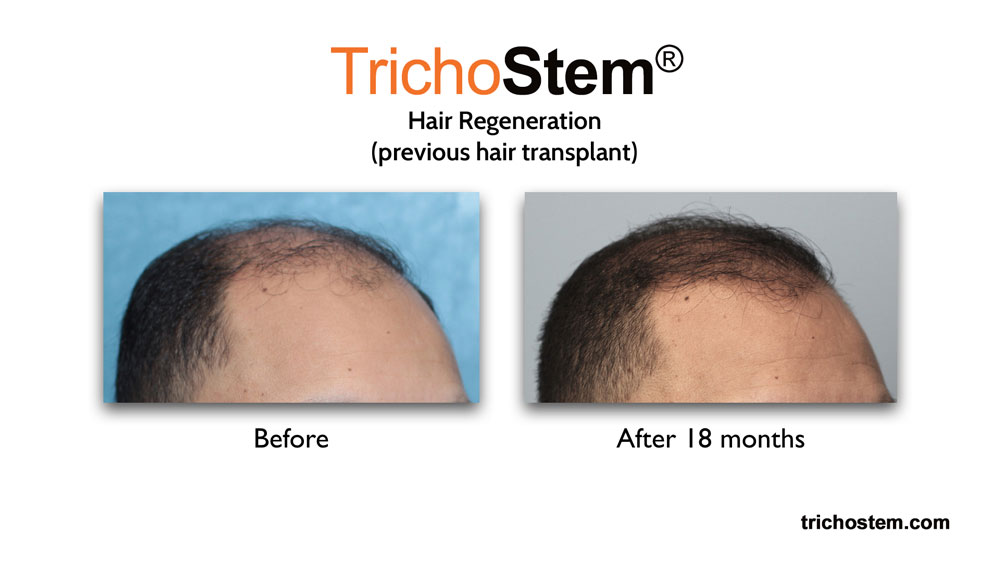
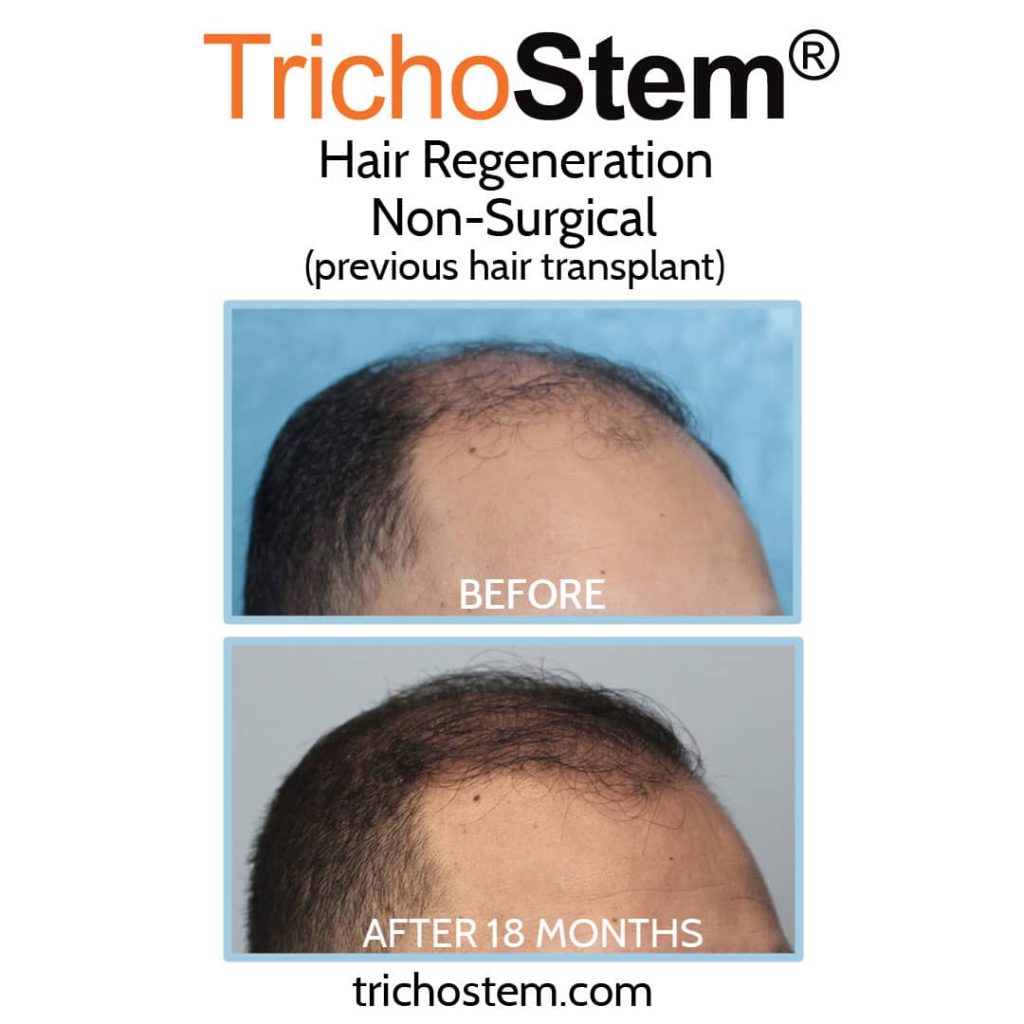
If a transplant was already performed, the TrichoStem Hair Regeneration treatment can still optimize healing, and transplant results. What we often do for patients who had their transplant done elsewhere is perform the injection treatment after their surgery, which can be done after scabs have initially healed, and within two months of the transplant surgery. As described previously, the TrichoStem Hair Regeneration treatment was first discovered when I tried to improve transplant healing and graft survival.
By doing the injection treatment after a transplant, we can increase graft survival by expediting healing, enhance recovery of the donor area, thicken native hair surrounding hair grafts, and also thicken grafted hair prone to thinning that was taken from outside the permanent zone. Unlike a hair transplant alone that does not treat progressive hair thinning, TrichoStem Hair Regeneration does treat further hair loss progression, although a DHT-blocker like finasteride is still needed for men with high DHT-sensitivity to slow further hair thinning for optimal results.
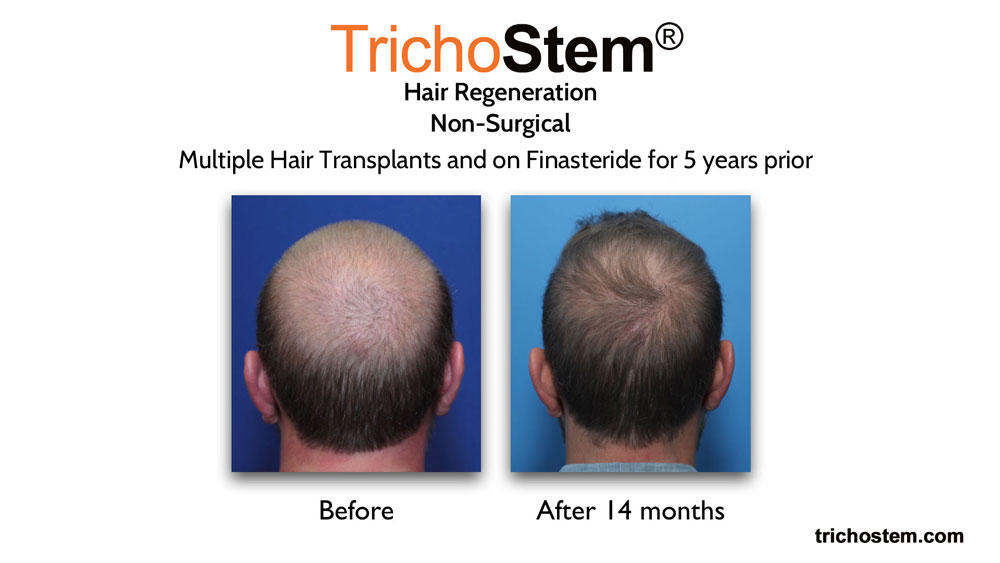
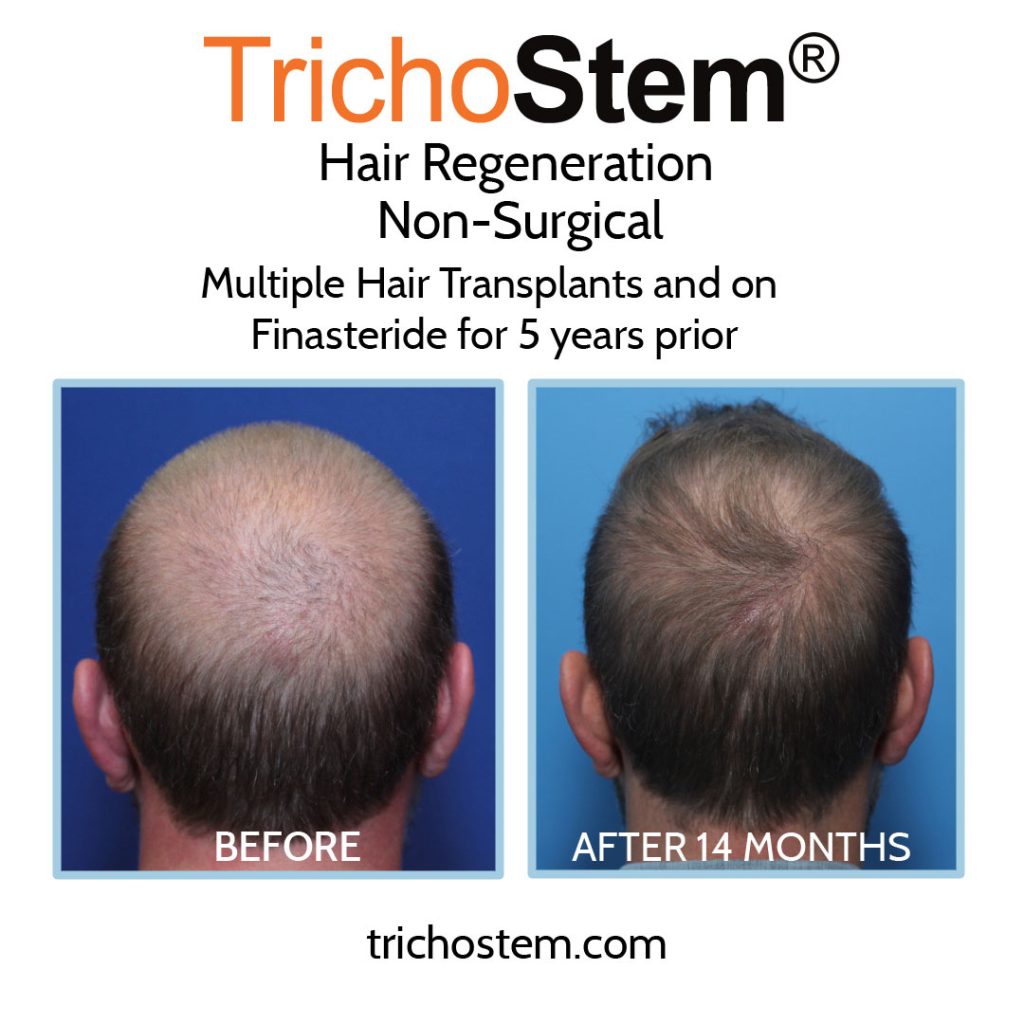
Hair Transplant Recovery Tips
Hair Restoration New York City and Long Island, New York
Dr Amiya Prasad is a Board-certified cosmetic Surgeon and Fellowship-trained oculofacial plastic and reconstructive surgeon. He’s been in practice in New York City and Long Island for over 25 years. To schedule a consultation, fill up the form below or contact any of our offices: Manhattan, New York City at (212) 265-8877; or Garden City, Long Island at (516) 742-4636; or Vienna, Virginia at (703) 356-1336.
